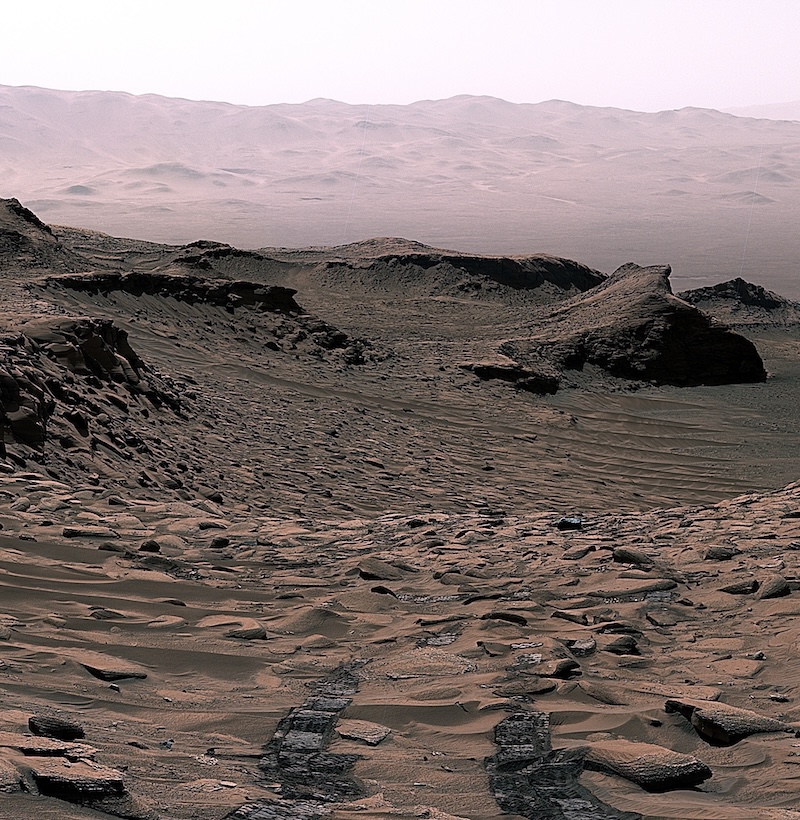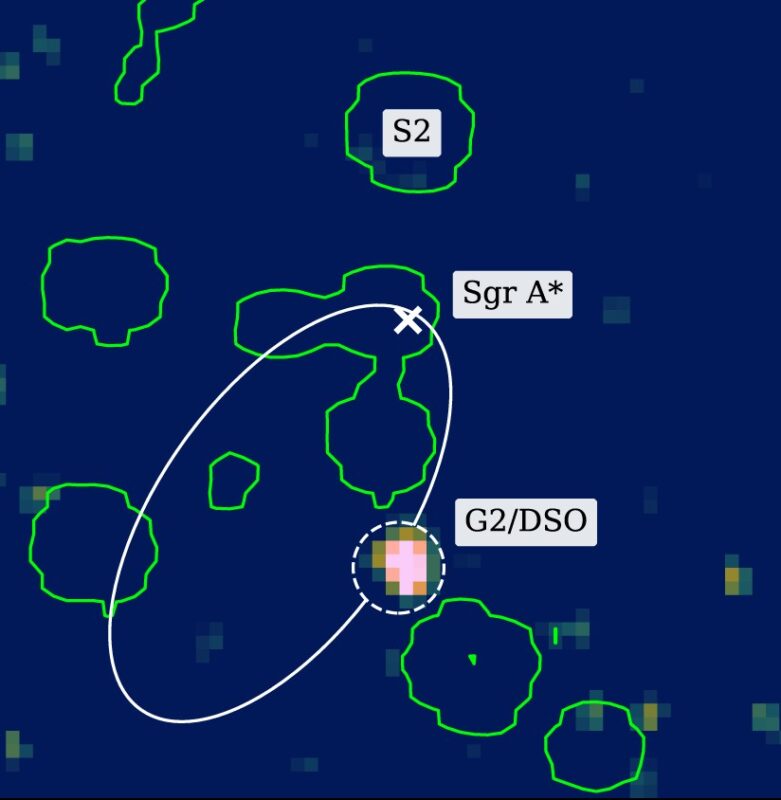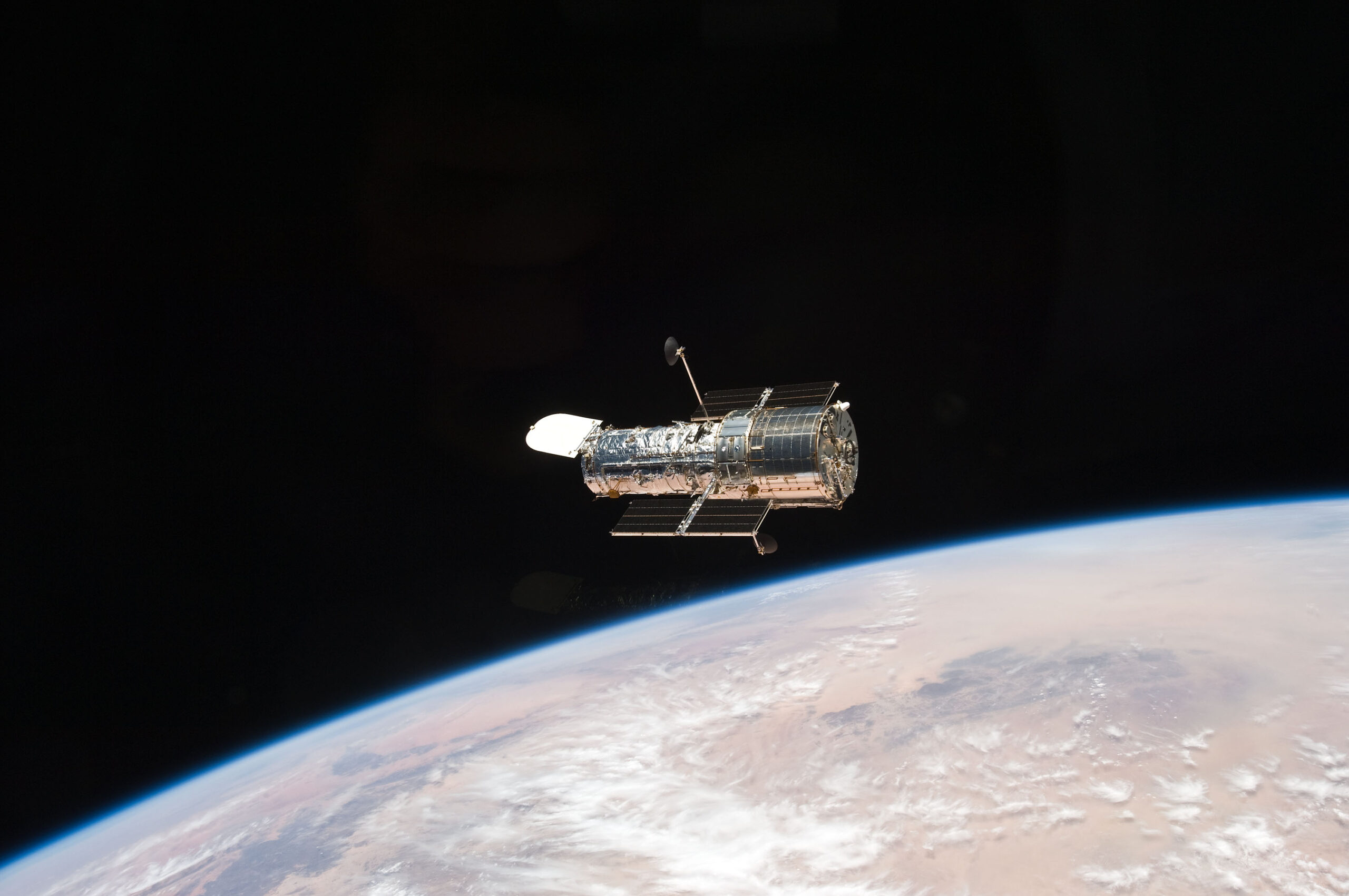Now Reading: New discovery of carbonates on Mars could solve big mystery
-
01
New discovery of carbonates on Mars could solve big mystery
New discovery of carbonates on Mars could solve big mystery


- Mars once had a thick atmosphere of carbon dioxide. It allowed rivers, lakes and perhaps even an ocean to exist. But then that atmosphere mostly disappeared. What happened to it?
- Scientists think some of it went into the ground and some was lost to space. But it should have left carbonates behind in rocks, which have been difficult to find so far. Now, the Curiosity rover has found rich deposits of carbonates in Gale crater.
- The carbonates are evidence for an ancient carbon cycle on Mars. They also help fill the missing piece of the puzzle as to what happened to Mars’ original atmosphere and support the scenario of a habitable ancient Mars.
The mystery of the missing carbonates on Mars
Scientists think Mars was once much warmer and wetter than it is today, with a thicker atmosphere of mostly carbon dioxide. Mars’ atmosphere today is still primarily carbon dioxide, but it is extremely thin and cold. So what happened to all the extra carbon dioxide? On April 17, 2025, NASA said the Curiosity rover has found evidence of large amounts of carbon dioxide locked in the planet’s crust as carbonates in rocks. This also means there was an active carbon cycle on ancient Mars, allowing for potential habitability.
An international team of researchers published its peer-reviewed findings in the journal Science on April 17, 2025. There is also a related Perspective paper in Science, also published on April 17, 2025.
NASA’s Curiosity rover has uncovered a hidden chemical archive of ancient Mars’ atmosphere, which suggests that large amounts of carbon dioxide have been locked into the planet’s crust, according to a new Science study.Learn more in this week's issue: scim.ag/3Ed9kOl
Carbonate minerals in Gale crater
The researchers, led by Benjamin Tutolo at the University of Calgary in Alberta, Canada, used data from the Curiosity rover that it obtained from rock samples taken in 2022 and 2023 in Gale crater. Gale crater used to be an ancient lake billions of years ago, and it even experienced megafloods. The research team was looking for carbonate minerals, which are commonly found in sedimentary rocks on Earth.
The rover drilled four samples altogether in this area, at Canaima, Tapo Caparo, Ubajara and Sequoia. They were from different stratigraphic units representing transitions from the former lakebed to wind-blown environments. Curiosity then used its onboard CheMin instrument to analyze the samples.
Orbiting spacecraft had previously studied the same rock layers but found no substantial carbonate deposits. So the researchers were surprised when they found siderite (iron carbonate) in high concentrations in the samples. The amount ranged from approximately 5% to over 10% by weight, within magnesium sulfate-rich layers. Tutolo said:
The discovery of abundant siderite in Gale crater represents both a surprising and important breakthrough in our understanding of the geologic and atmospheric evolution of Mars.
Co-author Thomas Bristow, a research scientist at NASA Ames, added:
Drilling through the layered Martian surface is like going through a history book. Just a few centimeters down gives us a good idea of the minerals that formed at or close to the surface around 3.5 billion years ago.
So why weren’t the carbonate deposits first identified from orbit? The researchers said that other minerals in the rocks probably masked them from view in the infrared images and data from the orbiters.

Evidence for an ancient carbon cycle on Mars
The analysis suggested that the siderite formed during interactions between water and rock, and evaporation. If so, that means the carbon dioxide was chemically sequestered – or absorbed – from the atmosphere and into the rocks. This would be a carbon cycle. On Earth, the carbon cycle involves carbon moving between the land, atmosphere and oceans.
But, perhaps like Mars, most of Earth’s carbon is stored in rocks, about 65,500 billion metric tons of it. It also involves photosynthesis and microbial respiration and decomposition. Whether that is also true for ancient Mars is still unknown. Human-caused emissions of carbon also play a role on Earth.

A global reservoir of carbon?
The carbonates that Curiosity found are just in Gale crater. But if these carbonate-rich rock layers are widespread, then that would suggest the existence of a global carbon cycle on ancient Mars. The fact that there once were rivers and lakes – and even likely an ocean with beaches – on Mars billions of years ago would seem to support that scenario. For that much water to have existed on the surface, the atmosphere must have been thicker and warmer than it is today. And it was most likely composed primarily of carbon dioxide, according to the current scientific understanding of Mars’ past.
A global reservoir of carbonates would indicate that much of Mars’ early carbon dioxide became trapped in its rocks as the planet cooled and its atmosphere thinned. Some of the carbon dioxide could also have escaped to space. But most of it might have simply gone into the ground.

A habitable Mars?
This, of course, also has implications for habitability and perhaps even life itself on ancient Mars. In the related Perspective paper, the lead author Janice Bishop, of the SETI Institute, and the co-author Melissa Lane, a Senior Researcher at Fibernetics LLC, said:
As details of Mars’ geochemistry are discovered through orbital and rover investigations around the planet, additional clues are revealed about the diversity of potentially habitable environment.
Indeed, if there was an active carbon cycle, and a thicker, warmer carbon dioxide atmosphere, then liquid water would have been possible on the surface. And – at least on Earth – water is essential for life. This would explain how Mars was able to have rivers, lakes and an ocean in its early history. Scientists suspected that the answer was more carbon dioxide, but until now, the evidence for the leftover carbonates to prove it was scant. But now it seems they might have finally been found.
Bottom line: The Curiosity rover has found deposits of carbonates on Mars. It’s evidence for an ancient carbon cycle and could explain what happened to Mars’ atmosphere.
Source: Catching a glimpse of ancient Mars
Via American Association for the Advancement of Science/ EurekAlert!
Read more: Mars rover Curiosity heads for intriguing ‘spiderwebs’
Read more: Martian rock crushed by Curiosity hides a surprise!
The post New discovery of carbonates on Mars could solve big mystery first appeared on EarthSky.
Stay Informed With the Latest & Most Important News
Previous Post
Next Post
-
 012024 in Review: Highlights from NASA in Silicon Valley
012024 in Review: Highlights from NASA in Silicon Valley -
 02Panasonic Leica Summilux DG 15mm f/1.7 ASPH review
02Panasonic Leica Summilux DG 15mm f/1.7 ASPH review -
 03How New NASA, India Earth Satellite NISAR Will See Earth
03How New NASA, India Earth Satellite NISAR Will See Earth -
 04And Thus Begins A New Year For Life On Earth
04And Thus Begins A New Year For Life On Earth -
 05Astronomy Activation Ambassadors: A New Era
05Astronomy Activation Ambassadors: A New Era -
06SpaceX launch surge helps set new global launch record in 2024
-
 07From Polymerization-Enabled Folding and Assembly to Chemical Evolution: Key Processes for Emergence of Functional Polymers in the Origin of Life
07From Polymerization-Enabled Folding and Assembly to Chemical Evolution: Key Processes for Emergence of Functional Polymers in the Origin of Life




















